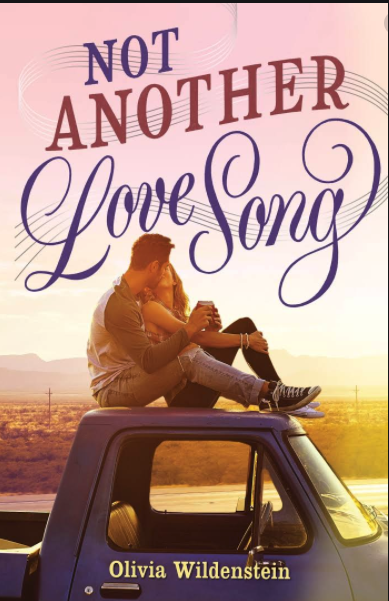 I’ve always loved reading dual point-of-view, so it’s no surprise that I also love to write it. My upcoming debut novel, LOVE SONGS & OTHER LIES, is told in dual POV (and dual timeline, just to keep things complicated) switching between two protagonists—boy and girl—both seniors in high school, as they fall in love for the first time. And then again, when they’re unexpectedly reunited a year later.
I’ve always loved reading dual point-of-view, so it’s no surprise that I also love to write it. My upcoming debut novel, LOVE SONGS & OTHER LIES, is told in dual POV (and dual timeline, just to keep things complicated) switching between two protagonists—boy and girl—both seniors in high school, as they fall in love for the first time. And then again, when they’re unexpectedly reunited a year later.
WHY write dual POV? I chose to write LOVE SONGS in dual POV, because it fit the story. Both Cameron and Vee, had their own independent goals and problems, before and after their stories began to intertwine. And for a love story, dual POV can be an ideal setup, letting the reader get in the head of both love interests. Because to make the story I was telling effective, I needed readers to be able to see the motivations, fears, and secrets (well, most of the secrets) of both characters. And that’s really the biggest selling point of dual POV—as a reader (and a writer) you get intimate access to more than one character. You’re able to fill in some of the knowledge holes you’d have with a single POV.
While dual POV can be a powerful tool in the art of manipulating your reader’s feelings, one of the keys to successfully writing it, is knowing WHEN to use it in the first place. Because there’s nothing I love more in life than a good list, let’s go through a quick little checklist, to determine if it’s the right time to write dual POV. If you’re considering one of your characters to be a POV character, ask yourself the following:
Is he/she a main character?
Could their story be told without their POV?
Do they have equal importance to this story?
If you can answer YES to all of these, then there’s a good chance it’s all good to make them a POV character. But, here are a few more very important questions to ask yourself about your characters:
Do they have a unique story of their own?
Does each have independent goals and problems?
Do they see things differently?
If your characters are together almost constantly, and your only reason to share both POV’s is for us, as readers, to know their inner thoughts, then consider if it’s really necessary. The last thing you want to do in dual POV, is to have each character rehash the exact same events, and from a similar perspective. The only exception to this, would be if showing two very different perceptions of the same situatinos was the point of your novel (in that case, just ignore me). But in general, if you can’t define two separate sets of goals, storyline, and problems for your characters, then you should think twice about giving them both POV. So, if you’re writing about two characters that have many shared experiences (they’re in all the same classes!) and see many situations similarly, then consider telling your story from a single POV.
But Jessica, I’ve asked myself all of these questions, and I still want to write dual POV!
So, HOW do you make it work? You’ve got two independent characters, ready to tell their separate (but perhaps intertwined) stories, so all that’s left is doing it well. Here are a few tips to nailing dual POV:
Remember those independent storylines, problems and goals? Well, your POV characters also need to have unique VOICES. This is especially true if you’re writing in first person. My own little test for making sure I’ve achieved this, is to scroll (or flip, if I’m going old-school paper) through my manuscript, stopping at random to read a few different sections. Without looking at the context of what’s happening, I should be able to know who the narrator of that section is. Because they should sound and feel different. Maybe it’s their word choice. Or the length of their sentences—perhaps one of them adds more details, while the other keeps things simple. Even the cadence of the phrasing can help to give away whose head the reader is in. If you can’t easily identify the narrator, it’s time to do some tweaking.
And aside from the actual words on the page, consider your characters—their prior experiences and current problems—and ask yourself how they would react to certain situations. Maybe one of your characters is more forthcoming than the other. Or one sees the best in everyone and stays positive, while the other is a real Debbie Downer, due to some past hang-ups. Let this all shine through in the voice, so that readers are experiencing your story through two distinct and different perspectives.
Lastly—and I hate to say this to all of you pantsers out there—but you should be prepared for a little more organization than with a single narrator. To avoid the story redundancy I mentioned earlier (really, I can’t stress enough how horrible this can be if not done purposefully) you’ll have to figure out which chapters or scenes will be narrated by whom. If you only have one POV present, then it’s an easy choice, but if both are options, then you have a choice to make. Sometimes, the narrator will be the character with the most to share. And other times, you’ll want it to be the person with the most to hide. If you can’t decide, give it a try from both perspectives. It will help you decide whose is right to use, and you’ll likely learn a little something about your characters in the process.
When deciding on the POV of each scene, also make sure you’re organizing things in a way that keeps the reader from staying in one POV for too long, OR for too short a time. If too long, it’s easy to get disconnected with one of the narrators, and if too short, it can be difficult to connect, and settle into their voice. Your narrators don’t have to get equal time, every other chapter, but make sure that things aren’t so choppy that they’re jarring, or so lengthy that readers wonder why you have dual POV’s to begin with!
One last tip: If you find yourself struggling with the mental flip-flop of writing different POV from scene to scene, try staying in POV for an entire writing session, to keep consistent. But once you get the hang of your voices, you might be able to switch with ease. And once you go dual POV, you may never go back!









2 Responses
Thank you for this! I’m struggling with making some scenes less choppy for my dual POV YA romance. I can’t wait to buy your book and see what worked for you!
I hope it’s helpful! I love writing dual POV!